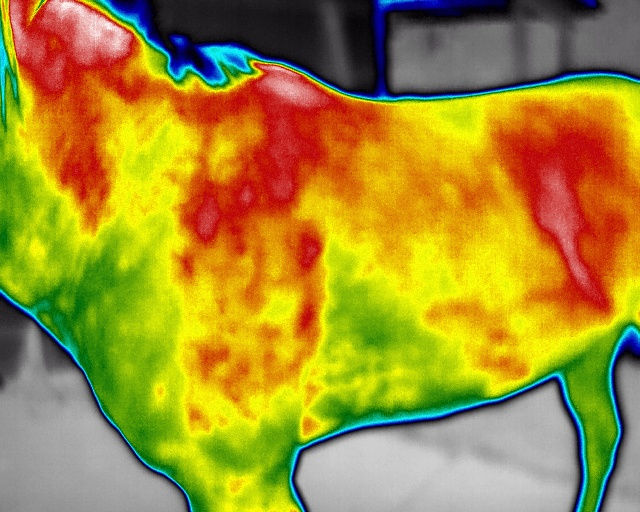Exploring Alternative Therapies for Osteoarthritis in Dogs Beyond Medications and Their Risks
- Dr. Angelique Barbara

- Jul 7
- 3 min read
Updated: Aug 8

Did you know that by age eight, around 80% of dogs will show signs of osteoarthritis? Furthermore, more than 90% of these dogs are prescribed medications to alleviate their pain. Although these medications may be able to minimize sympotms, they come with various potential side effects that can negatively affect a dog’s overall health.
Pharmaceuticals like non-steroidal anti-inflammatory drugs (NSAIDs) and pain medications are frequently used. However, the risks associated with these drugs deserve careful consideration.
The Side Effects of NSAIDs
NSAIDs are widely prescribed for pain relief and inflammation due to osteoarthritis. Sadly, they can lead to serious health issues.
Gastrointestinal Issues
NSAIDs often cause gastrointestinal distress. Symptoms like vomiting, diarrhea, and loss of appetite can arise. In severe cases, these drugs may lead to ulcers in the stomach, which can be life-threatening. A study showed that nearly 15% of dogs on NSAIDs experience gastrointestinal complications.
Liver Toxicity
Long-term use of NSAIDs can elevate liver enzymes, signaling potential liver toxicity. Regular blood tests are crucial to monitor liver function in dogs taking these medications.
Kidney Strain
Dehydrated or older dogs are at a higher risk for kidney strain caused by NSAIDs. Given that kidney health is vital for all dogs, this risk is particularly alarming. Approximately 10% of senior dogs are impacted by kidney issues related to NSAIDs.
Behavioral Changes
Some dogs experience lethargy or increased restlessness on NSAIDs, impacting their quality of life. This can make them less interested in activities they once enjoyed.
The Side Effects of Pain Medications
Pain medications can offer comfort, but they are not without side effects.
Sedation
One common side effect of pain medications is sedation, which leads to excessive sleepiness. This can be especially challenging for active breeds like Border Collies or Jack Russell Terriers that require significant engagement.
Gastrointestinal Distress
Similar to NSAIDs, other pain medications can lead to nausea, vomiting, and constipation. These symptoms can make a dog uncomfortable and affect their eating habits.
Tolerance or Dependence
Over time, some dogs may develop a tolerance to pain medications, resulting in increased dosages and potential dependence. Approximately 8% of dog owners report this issue with long-term use of pain relief medications.
Confusion or Agitation
In some cases, pain medications can lead to confusion or agitation, causing distress for both the dog and its owner.
Reduced Respiratory Rate
In rare cases, overdose or sensitivity to pain medications may lead to a dangerously reduced respiratory rate, requiring immediate veterinary attention.
Alternatives to Medications: The Power of Massage and Bodywork

There are effective, non-medical alternatives that can significantly improve a dog's quality of life. Techniques such as massage, myofascial release, acupressure, and stretching can be very beneficial.
Benefits of Massage & Bodywork
These non-invasive methods not only relieve pain but also improve a dog's overall wellness.
Improves Circulation and Lymph Flow
Massage increases blood circulation and lymphatic flow, which can enhance healing and reduce inflammation in the joints.
Enhances Range of Motion and Flexibility
Regular massage can boost flexibility and joint mobility, making it easier for dogs to move comfortably. For example, dogs receiving massage therapy showed a 30% improvement in their range of motion compared to those who did not.
Reduces Muscular Tension and Pain
By relieving muscular tension, massage helps ease the pain associated with osteoarthritis without the side effects of medications.
Promotes Relaxation and Reduces Anxiety
The soothing effects of massage not only encourage relaxation but also help lower anxiety levels in dogs who may be in discomfort.
Supports Better Sleep and Emotional Regulation
Improved comfort through massage can lead to better sleep, allowing dogs to recuperate and manage their moods more effectively.
Encourages Body Awareness and Neuromuscular Coordination
Massage enhances body awareness, which aids in coordination, essential for dogs managing osteoarthritis.
Safe and Customizable
Most importantly, massage therapies do not carry systemic risks like organ toxicity. They are gentle and customizable to each dog’s unique needs. These therapies also offer caregivers the chance to strengthen their bond with their pets while observing subtle changes in health and behavior.
A New Era in Canine Wellness
As osteoarthritis becomes increasingly prevalent among dogs, exploring alternative therapies is essential. While medications may be necessary, methods like massage and bodywork present safe and effective options for supporting canine health.
Adopting these holistic care strategies can enhance the quality of life for dogs suffering from osteoarthritis. With continuous learning and exploration, the canine community can embrace these alternatives to ensure our pets live happier, healthier lives well into their later years.



Comments